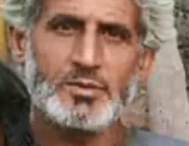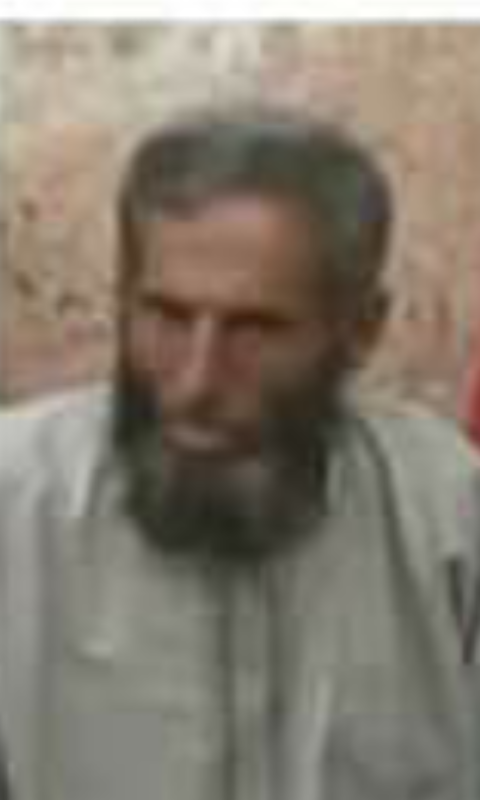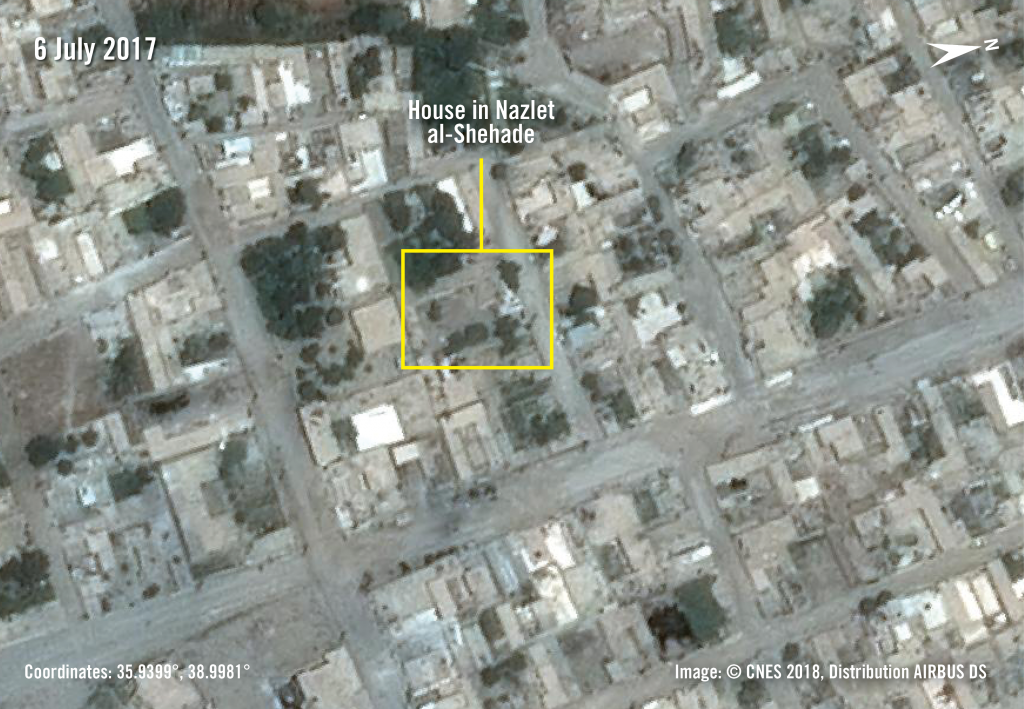Incident Code
Incident Date
Location
Geolocation
Geolocation
Airwars Assessment
(Previous Incident Code: S1080a)
Up to 13 civilians including between 1 and 5 children from two families died in Coalition airstrikes on Nzalat Shahada, according to local media. 11 of the victims were reportedly from the same family. A year later the US-led alliance accepted responsibility for the deaths.
According to the joint Amnesty/Airwars report “War in Raqqa: Rhetoric versus Reality” the incident contained three airstrikes, one striking a house and two others striking a car.
Al Araby reported “Coalition against Terrorism struck in the area of Nazlah Shehadeh and Saif al-Dawahah district in the south of the city of Al-Rigga in northern Syria. The sources said that among the dead were two families, including at least five children, and two women, while others were injured, as well as large destruction of buildings.”
Baladi, blaming the Coalition, put the death toll at eight, as did the Syrian Network for Human Rights.
Besides from the 11 family members, Raqqa is Being Slaughtered Silently reported the death of two additional victims, identified by their first names, one child and one adult man.
According to the Syrian Observatory for Human Rights, raids by “warplanes” killed at least 11 civilians. It said,” they are 3 children (brothers) and 8 citizens of one family (and they are 3 brothers and one of them is with his son and another man with 2 of his children and a young boy)”.
The journalist, Mohab Naser, published a very graphic A’amaq video showing the aftermath of a strike with seriously injured victims, including children. We do not know whether the footage is of this specific strike. However, it says that there were several Coalition strikes on July 18th.
In June 2018, Amnesty International published a major report into this event and others during the battle for Raqqa. “On 18 July 2017, with the fighting intensifying in the area, the family took their chance to flee. The Badrans had access to two cars in which they made several frantic trips, moving the women and children first. During one of these journeys, one of the cars was struck, reportedly by an air strike, killing four male family members inside. At the same time another air strike destroyed the house where the men had been staying, just as they were waiting for a car to collect them. That strike killed five family members, along with two other men, relatives’ friends whose names the survivors did not know. Amnesty International visited the destroyed house and spoke to members of the extended family, who had witnessed the strike and later helped to recover the bodies from the rubble.”
While the US-led alliance initially attacked Amnesty’s report, it later conceded killing 11 civilians and injuring a 12th: “July 18, 2017, near Raqqah, Syria, via Amnesty International report. During a strike on reported Daesh fighting positions near a residential area allegedly caused civilian casualties. One civilian was injured and 11 civilians were unintentionally killed.” The Coalition gave the coordinates of the event (within 100m) as 35°56.34936′, 038°59.86696′.
As the newest addition to the incident, the joint Amnesty/Airwars from April 2019 reported how different airstrikes had killed first “seven members of the Badran family”, hereof one child and six men, and two strikes had killed another “four members of the Badran family”, hereof two-three children and one-two women. The report identified nine out of the 11 victims by name.
In total, the report said that four airstrikes had killed a total of 39 family members and 10 neighbours “as they fled from neighbourhood to neighbourhood in search of safety.” Those remaining victims are, however, not included in this incident.
Amnesty’s researchers spoke to Hussein, a relative and witness, who told that “I visited them [the Badran family] that morning to ask if they needed anything. They were waiting for the car which had taken the women and children to come back to pick them up. I wished them a safe journey and left. Shortly after the house was bombed.”
Hussein added that “shortly after the house was bombed, a few streets away, we saw the car which had taken the women and children earlier on. It had been struck …and it was burning. The 4 men inside the car were killed” – a testimony which corresponds with Amnesty’s June 2018 research, also reporting about the death of four men in a car.
According to the Amnesty/Airwars research the coordinates of the house: 35.93988, 38.99818, while the coordinates of the street that also was struck were 35.939944, 38.998272.
Victims
Family members (9)





Individuals



